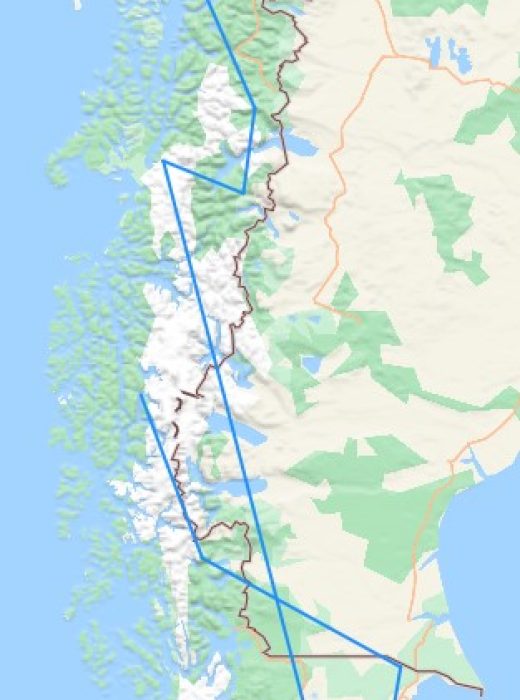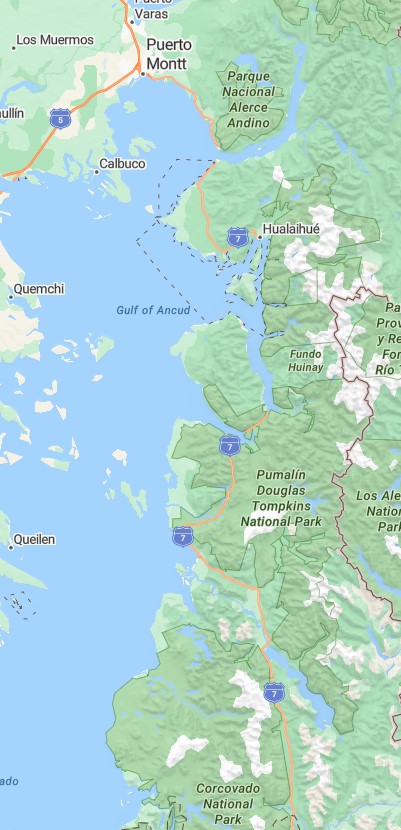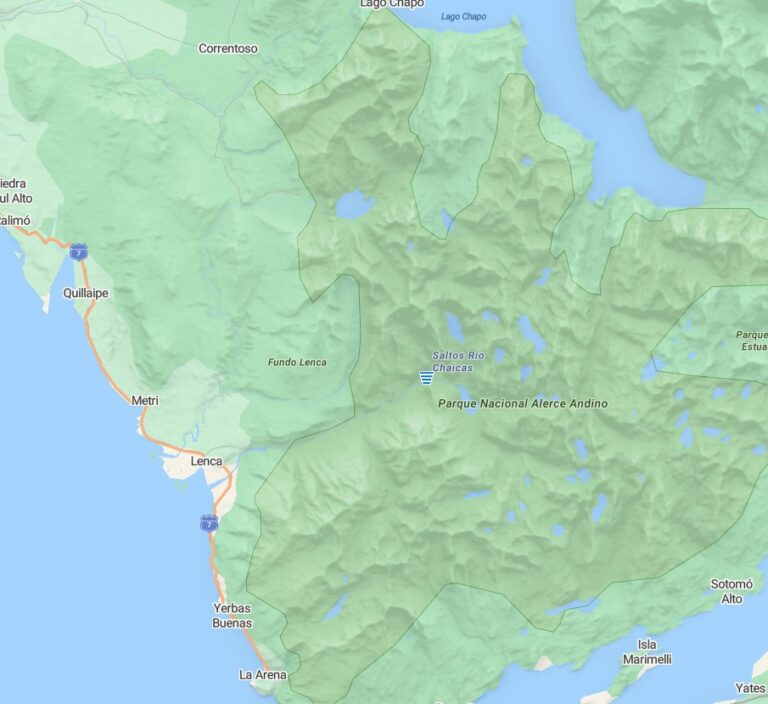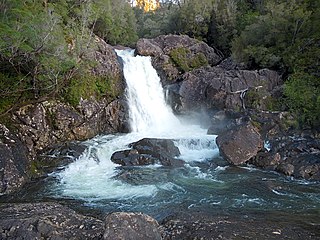Hiking through the parks of Patagonia humbled me beyond measure. I was not prepared for a place so inconceivably beautiful.
Garth L. - Alberta, Canada
When most travelers consider traversing or hiking through Patagonia, they balk. It’s formidable. It’s expensive. It’s too big.
What if I were to tell you there’s a way to make it an easier lift, so you don’t have to always hire a guide or an expedition outfitter. You don’t have to spend a lot of money at all to get into the thick of Patagonia’s many gorgeous hiking trails, and thereby save your bigger investments for one or two adventures that are truly worth it.
In this guide, I’m going to lay out for you the bus-packer’s route of just the Chilean side of Patagonia.
By containing yourself in one country, you save tons of money and hassle with immigration requirements and cross-border complications. We will do another similar guide to Argentine Patagonia in a separate article at a later time.
Our strategy of using the bus as a means of access is not only great for the wallet, but it also gets you far more places than you realize. You don’t need to sign up for a tour group or be tied to an itinerary that only partially suits you. You can change your mind as you go and divide up the route into smaller pieces if you want to fly to the nearest airport hub and start from there.
Chile is perfect because Chilenos treat the traveler well. They take great pride in their national parks and empathize with the foreign traveler who wants to be enriched by their incredible natural heritage. So, get your pencil and notepad ready, and let’s get started on helping you plan your unforgettable – and affordable – Patagonian adventure!

The entirety of the places I’m recommending and routing you through are a network of seventeen national parks of Chile that span a total of 2,800 kilometers (1,700 miles). Therefore you can expect access that is either free or has a small admission charge, but it is all public land. You should therefore take note of any signage along the way informing you of current park conditions, prohibitions, and closures for major holidays. As national parks, they receive Chile’s highest standard of ecological stewardship and are considered the country’s most precious resource. Please do your part to honor the ecological sanctity by not littering, disturbing wildlife, or burning a fire. Cooking with camp stoves or burning in designated pits are only allowed in specific locations, so check with the ranger at the park.
Of these seventeen parks, two can only be reached by water, but I’ll explain the ferry system later. Six other parks have no access roads, but you can still get near them on a bus and then either hike to the entrance on foot, or have a local tour operator take you into the park through special transportation means. I will call out those special situations in the profile of each park, but if you’re wanting to know right now which ones would be the most difficult to access, they are Isla Magdelena and Kawesqar. If reading about those two in particular convinces you that visiting them is a priority, just plan on paying quite a bit more for the effort it takes to get there.
If you’re not visiting another part of Chile before starting on your Patagonian parks adventure, you will likely want to plan a flight to one of the major airports that are the closest in proximity to the various parks.
These airports include Puerto Montt in the north (PMC – El Tepual), Balmaceda (BBA) in the center of of Patagonia, and Punta Arenas (PUQ – Carlos Ibañez) in the south. All are served by major airlines.
In Puerto Montt and Punta Arenas, you can also reserve airport transfers to pick you up and take you to your hotel or to the bus station.
Not every park requires an admission fee, but many do, and these generally range between $2 and $12 USD per person.
There are three ways to pay your fee:
You can register your visit and pay the entrance fee at the visitor information center or guard post at the park entrance. You don’t receive a permit in the formal sense of a bureaucratic document. It is a simpler and kinder process of just being recorded in the guest book of the park so the rangers know of your presence and when you plan to return.
The easiest solution is a handy online system at https://aspticket.cl, where you can both pay your admission fee and register in advance, and get a receipt that you can show from your phone upon entering the park for a more expedited process.
The most onerous, but it may be necessary in cases where you can’t get online and you doubt you will pass a formal ranger station while in the park. In these rare cases, you should visit a branch of CONAF in the town you’re in, which is the government ministry that oversees the national parks. I’ve supplied a list of addresses at the link below. Simply pay them a visit during business hours and you can both pay and register your planned visit directly at their office. They will probably be mystified by your visit and persuade you to utilize the ranger station or online methods, so you may have to explain to them in detail why you cannot.
Head national office - Santiago:
Address: San Pío X 2475
Telephone: (+56-2) 23280313
Patagonia Offices
---------------------
Castro office:
Address: Gamboa 424
Telephone: (56) 652532501
Chaitén office:
Address: Juan Todesco 67
Telephone: (56) 652731662
Chile Chico office:
Address: Alberto Blest Gana N° 121
Telephone: (56) 672411325
Coyhaique office:
Address: Av. Ogana 1060
Telephone: (56) 672212109
Futaleufú office:
Address: Manuel Rodriguez 400
Telephone: (56) 652731671
Hualaihué office:
Address: Libertador Bernardo O’Higgins s/n
Telephone: (56) 652217297
Llanquihue office:
Address: Urmeneta 977, 5º piso
Telephone:
Osorno office:
Address: Martínez de Rosas 430
Telephone: (56) 642221304
Puerto Aysén office:
Address: Km.2 Ruta 240 Aysén – Coyhaique
Telephone: (56) 672332743
Puerto Montt office:
Address: Ochagavía 458
Telephone: (56) 652486101
Puerto Natales office:
Address: Manuel Baquedano 847
Telephone: (56) 612411438
Puerto Williams office:
Address: Carabinero Mario Leal 106
Telephone: (56) 612621303
Punta Arenas office:
Address: Av. Bulnes 0309, 4° piso
Telephone: (56) 612238554
----------------------
OUTSIDE PATAGONIA
----------------------
Chillán Office:
Address: Panamericana Norte 3430
Telephone: (56) 958118943
Concepción office:
Address: Barros Arana 514, 3.er piso, Local A
Telephone: (56) 412624062
Talca Office:
Address: 4 Norte 1673
Telephone: (56) 712209510
Temuco office:
Address: Francisco Bilbao #931, 2do. Piso
Telephone: (56) 452298100
Valdivivia office:
Address: Los Castaños 100, Isla Teja
Telephone: (56) 632283404
Valparaiso office:
Address: 3 Norte 541, Viña del Mar
Telephone: 322320212
The northernmost region from Puerto Montt to Futaleufú.
Alerce Andino, Pumalín, Hornopiren, Corcovado
The enchanted archipelago of Chile.
Chiloé, Tantauco, Tepuheico, Ahuenco
The mountainous cathedral of Patagonia.
Queulat, Melimoyu, Isla Magdalena, Cerro Castillo, Patagonia, Laguna San Rafael
The magical and mystical "end of the world".
Bernardo O'Higgins, Pali Aike, Kawésqar, Alberto de Agostini, Torres del Paine, Yedegai, Cabo de Hornos
Even just the Chilean side of Patagonia is so vast, that to go through the entire park system at a pretty fast pace would take you over a month. Realizing most don’t have that amount of time, I’m going to break this down into sub-regions, each of which have some climactic or topographical theme.
Going north to south, those sub-regions are 1) Los Lagos (closest to Puerto Montt); 2) Chiloé (the archipelago southwest of Puerto Montt); 3) Aysén (closest to Balmaceda); and 4) Magallanes (closest to Punta Arenas).
Although an oversimplification, basically Los Lagos is characterized by lakes and forests and foothills, Chiloé is marine islands and parks often reached by ferry, Aysén is home to dramatic mountain ranges, and Magallanes is where you go if you’re seeking glacier treks and antarctic wildlife. But exceptions abound, so read about each park in detail and you may find surprises.

You can either fly in to Puerto Montt, the largest city of southern Chile, or read our article on how to get to Puerto Montt by bus from Santiago, which also describes some top attractions to check out when you get there.
To make it even more convenient, we have private drivers available to get you from and to the airport, or for full drives all throughout the Los Lagos and Chiloé regions.
Flights connecting the other airport hubs in this article (Balmaceda and Punta Arenas) are also available in Puerto Montt, plus to smaller airports in Chaitén and Melinka.
Lastly, Puerto Montt is the head harbor for the southern Chile ferry system, which I highly recommend using to get to otherwise unreachable and pristine maritime villages and parks.
Reservations on the ferry system in general can be made on AndesTransit and you just filter by ferry instead of bus, but I’ll include direct links in the description of the parks below where the ferry is suggested as the means of transportation to get to that park.
If you want alternatively to begin near the southern part of the Los Lagos region, you can follow the link above to fly to Chaitén.


Silvio Rossi, CC BY 3.0, via Wikimedia Commons
Open all year
Topography: Temperate Rainforest
Climate: Rainy but mild
The Alerce Andino National Park is the closest of all the parks on the mainland to Puerto Montt, so it’s a great choice if you have limited time and you are based in Puerto Montt. Tucked in between three beautiful bodies of water, the Reloncaví Sound, the Reloncaví Estuary, and Lake Chapo, the park is a mountainous area of primeval forests dominated by alerce evergreen trees (hence the name). In the Sargazo and Las Chaicas sectors of the park, many of these trees (also known as Fitzroyas) date back 2,500 to 3,000 years
There are a variety of animals you could catch sight of, like pudú (a deer that almost resembles a fox), puma, and güiña (similar to an ocelot). And if you’re a birder, look for the mighty condor, the black woodpecker, kingfishers, and the peuco hawk.
Some other beloved sights in the park are the Las Chaicas waterfall and a really cool wooden suspension bridge going over a river (“el puente Sargazo”).

|
Name
|
Distance
|
Hiking Time (round-trip)
|
Difficulty
|
Features
|
Open
|
|---|---|---|---|---|---|
|
Mirador Huillifotem
|
2 km
|
1 hour
|
Medium
|
Lookout points over the forest and river valley.
|
All year
|
|
Los Ulmos
|
800 m
|
30 minutes
|
Easy
|
Birdwatching
|
All year
|
|
Laguna Fría
|
9.5 km
|
9 hours
|
Difficult
|
Ancient Alerce trees dating back 3,000 years.
|
All year
|
|
Laguna Sargazo
|
2.5 km
|
2 hours
|
Medium
|
El puente Sargazo wooden bridge, Lake Sargazo
|
All year
|
|
Los Canelos
|
800 m
|
30 minutes
|
Easy
|
Ideal for families, very accessible.
|
All year
|
|
Chaicas (Salto)
|
3 km
|
2 hours
|
Difficult
|
Chaicas waterfall
|
All year
|
|
Chaicas (Milenario)
|
3.2 km
|
2 hours
|
Difficult
|
3,000-year old tree
|
All year
|
|
Chaicas (Chaiquenes)
|
5.5 km
|
4 hours
|
Difficult
|
Chaiquenes lake, crossing river on foot
|
Oct-Apr
|
|
Chaicas (Triangulo)
|
9.5 km
|
9 hours
|
Difficult
|
Triangle lake, crossing river on foot
|
Oct-Apr
|
The park opens at 9:00 am (summer and winter), and closes at 2:30 pm in the winter and at 6 pm in the summer (with last entry permitted 2 hours before closing).
So, if you’re planning on returning to Puerto Montt the same day and not camp in the park or in the small village of Lenca, you’ll want to depart Puerto Montt by 8:00 in the morning to take advantage of the trails without any hurry. The shortest bus trip is 45 minutes to Sector Correntoso on the northern side of the park, and 90 minutes to Sector Chaicas on the southern end.
Camping in the park is only permitted in the northern Correntoso sector, but no fires — only gas stoves are allowed. However, you can also overnight at the rustic lodge on the Laguna Sargazo trail on a first-come first-serve basis for $6 USD per person.
The entrance fee to any of the park entrances is $4 USD per person that you can pay online for Correntoso or Sargazo sectors, but in-person only at the ranger station for trails in the Chaicas sector.
If you’re heading to the park entrance in the Correntoso sector (Mirador Huillifotem trail) and the Sargazo sector and its trails, bus tickets are not sold online.
So, you will need to go to the Puerto Montt bus terminal early in the morning around 8 a.m. and approach the booth for Buses J.B. or Buses Fierro.
In summer, buses J.B. may be operating small vans all the way to the park entrance and beyond to the trailhead to Laguna Sargazo, so simply ask and you may get a steal of a deal to go deep into the park using public transportation.
However, on other days they will only be going to the town nearest the park entrace, Correntoso, a trip from Puerto Montt that takes about 45 minutes in total.
In Correntoso, the bus will drop you off at a stop at the intersection of the V-657 road that goes south 2.5 km to the park entrance and ranger station. You can either follow the signs to walk down the V-657 road to the park entrance, or ask one of the local merchants for a town taxi to drive you there for another small fare.
The park rangers can also call a taxi for you to return you to Correntoso. The cost for the ticket will be about $2 USD one-way, and about $10 to go as far the Laguna Sargazo trail.
You will have to ask the bus driver when they will be picking up from the same place they drop you off. Maximum bus (plus taxi) transportation budget: less than $20 USD one-way.
You also have the option of hiring private transportation to take you directly to the ranger station and trailheads of your choice.
For the Huillifotem, Los Ulmos, and Laguna Sargazo trails, the driver can wait there for you while you hike, as the hiking only takes 2 hours or less. Make sure when you reserve on the link above that you check the day-trip option if you are going back to Puerto Montt the same day.
However, if you are planning to camp in Huillifotem or lodge in Sargazo, and want to the shuttle to come and pick you up on a separate day, select the round-trip option.
For hiking to Laguna Fría, the only option would be round-trip, even if you are planning to do the entire nine-hour hike in a single day, as a driver can only wait a maximum of three hours for a day-trip.
The second entrance to the park is via the Chaicas sector, taking you to the Chaicas trails and the Los Canelos trail.
Again, bus tickets will not be sold online and you will need to visit the bus terminal in Puerto Montt to approach the offices of one of three bus companies: Buses Fierro, Bahia Quillaipe, or Transportes Jordan.
Ask these companies for tickets to Lenca, but you may see them posted La Arena, which is simply the end of the road past Lenca. The trip time to Lenca is 45 minutes, all along the paved highway Ruta 7.
In Lenca, there are several small pensiones or family-owned lodging, as you may consider staying there and doing your hikes the next morning.
From Lenca, you can walk up the gravel road V-701 for 7 km alongside the Chaicas river to the park entrance.
However, in Lenca, drivers are available for hire who have the required four-wheel drive vehicles to drive you to the park entrance and ranger station. The drivers will be easily visible, and if you can’t find one, simply stop in to one of the village lodges or merchants and they will call one for you. Maximum bus (plus truck) transportation budget: $40 estimated one-way.
The private shuttle option to Lenca is much simpler than Correntoso and Sargazo sectors.
You can reserve private transportation to take you to Lenca from Puerto Montt, but they are not materially equipped to go further from Lenca up the rough road to the Chaicas ranger station and trailheads. For that extension, hire a 4wd driver in Lenca per the second half of the instructions in “Chaicas by bus”.
You can elect the day-trip option to have the driver wait for you in Lenca if you are only going on the Los Canelos, the Salto or the Milenario hike as they will wait for a maximum of three hours. For all other hikes, the driver will charge the round-trip rate, even if you do manage to do it all in one day.
If you are planning to do any of the Chaicas hikes, upon arriving in Puerto Montt, go directly to Lenca in a private shuttle instead of staying in Puerto Montt.
In Lenca you can relax in tranquil village surroundings with beautiful views of the Reloncaví bay. Plus you can utilize that time in Lenca to get to know the more authentic culture of the region’s people through their local families whose accommodations host you, and then have them help you arrange for a trusted local driver to take you to the ranger station.
With this option, you can hike as much as you want without time pressures, knowing your Lenca contacts are aware of your plans and waiting for your return visit.
South America Buses (SAB) is the luxury channel of AndesTransit, the land travel transportation schedule and reservation hub preferred most by travelers to Latin America. SAB has a select team of distinguished travel experts who have dedicated themselves to research, document, and curate routes and carriers in South America that meet nothing short of the highest quality standards in land travel.
Other Links
Copyright © 2024 SouthAmericaBuses. All rights reserved.
